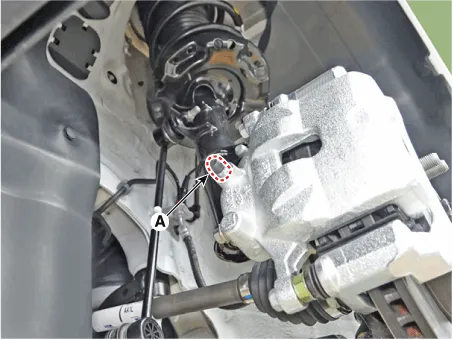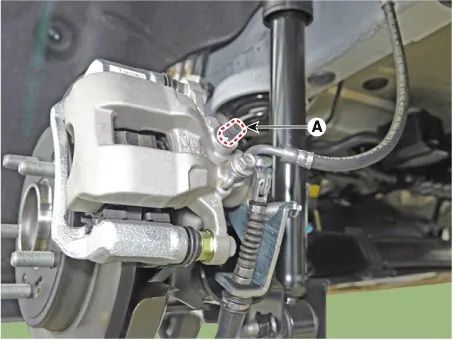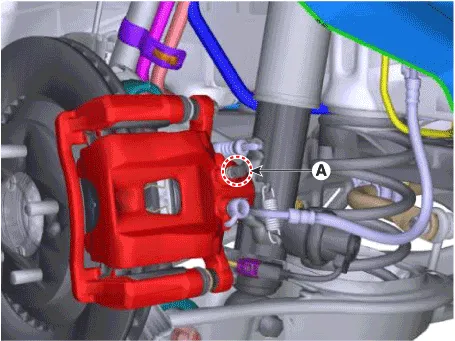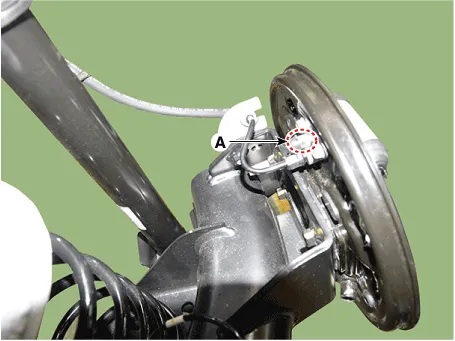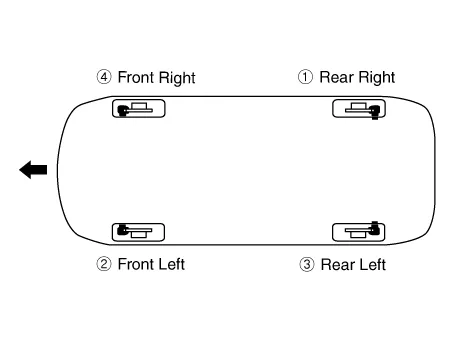Hyundai Elantra (CN7): Brake System / Brake bleeding procedures
| Brake System Bleeding |
|
| 1. | Make sure the brake fluid in the reservoir is at the MAX (upper) level line. |
| 2. | Have someone slowly pump the brake pedal several times, and then apply pressure. |
| 3. | Loosen the right-rear brake bleed screw (A) to allow air to escape from the system. Then tighten the bleed screw securely. [Front]
[Rear torsion beam parking cable type]
[Rear torsion beam EPB type]
[Rear multi link parking cable type]
[Rear multi link EPB type]
[Rear drum brake type]
|
| 4. | Repeat the procedure for wheel in the sequence shown below until air bubbles no longer appear in the fluid. |
| 5. | Follow the sequence as shown below.
|
| 6. | Refill the master cylinder reservoir to MAX (upper) level line. |
| 1. | Remove the reservoir cap and fill the brake reservoir with brake fluid.
|
| 2. | Connect a clear plastic tube to the wheel cylinder bleeder plug and insert the other end of the tube into a half filled clear plastic bottle. |
| 3. | Connect the diagnostic tool to the data link connector located underneath the dash panel. |
| 4. | Select and operate according to the instructions on the diagnostic tool screen.
|
| 5. | Have someone slowly pump the brake pedal several times, and then apply pressure. |
| 6. | Pump the brake pedal several times, and then loosen the bleeder screw until fluid starts to run out without bubbles. Then close the bleeder screw (A). [Front]
[Rear torsion beam parking cable type]
[Rear torsion beam EPB type]
[Rear multi link parking cable type]
[Rear multi link EPB type]
[Rear drum brake type]
|
| 7. | Repeat the procedure for wheel in the sequence shown below until air bubbles no longer appear in the fluid. |
| 8. | Follow the sequence as shown below.
|
| 9. | Refill the master cylinder reservoir to MAX (upper) level line. |
Special Service Tools Tool (Number and Name) Illustration Use 09581-11000Piston expanderSpreading the front disc brake piston.
Other information:
Hyundai Elantra (CN7) 2021-2025 Service Manual: Compressor oil
Repair procedures Oil Specification1.The HFC-134a system requires synthetic (PAG) compressor oil whereas the R-12 system requires mineral compressor oil. The two oils must never be mixed.2.Compressor (PAG) oil varies according to compressor model. Be sure to use oil specified for the model of compressor.
Hyundai Elantra (CN7) 2021-2025 Service Manual: Blower Motor
Repair procedures Inspection1.Connect the battery voltage and check the blower motor rotation.Replacement1.Disconnect the negative (-) battery terminal.2.Disconnect the blower motor connector (A) and then remove the blower motor (B) after loosening the screws.
Categories
- Manuals Home
- Hyundai Elantra Owners Manual
- Hyundai Elantra Service Manual
- Driver assistance system
- Components and components location
- Suspension System
- New on site
- Most important about car


